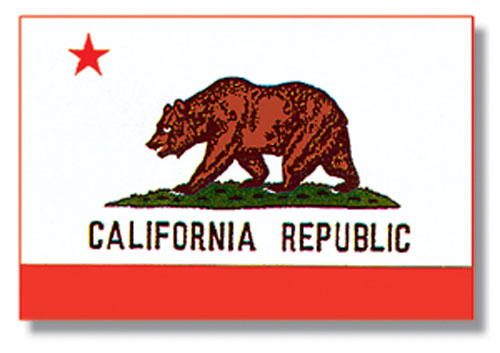Part I: Content Domains for Subject Matter Understanding and Skill in History and Social Science (Multisubject)
see: http://www.cset.nesinc.com/PDFs/CS_multisubject_SMR.pdf for link to original
In Geography 417 , the following knowledge sets and skills are most closely covered.
Domain 3: California History**
3.1 The Pre-Columbian Period through the Gold Rush. Candidates for Multiple Subject Teaching Credentials...
-
Identify the impact of California’s physical geography on its history.
-
They describe the geography, economic activities, folklore and religion of California’s American Indian peoples.
-
They discuss the impact of Spanish exploration and colonization, including the mission system and its influence on the development of the agricultural economy of early California.
-
They describe Mexican rule in California.
-
They state the causes of the war between Mexico and the United States and its consequences for California.
-
They describe the discovery of gold and its cultural, social, political and economic effects in California, including its impact on American Indians and Mexican nationals.
3.2 Economic, Political, and Cultural Development Since the 1850’s. Candidates for Multiple Subject Teaching Credentials....
-
Identify key principles of the California Constitution, including the Progressive-era reforms of initiative, referendum and recall, and
-
They recognize similarities and differences between it and the U. S. Constitution.
-
They identify patterns of immigration to California, including the Dust Bowl migration, and discuss their impact on the cultural, economic, social and political development of the state.
-
They identify the effects of federal and state law on the legal status of immigrants.
-
They describe historical and contemporary perspectives on cultural diversity in the United States and in California.
-
Candidates understand the development and identify the locations of California’s major economic activities: mining, large-scale agriculture, entertainment, recreation, aerospace, electronics and international trade.
-
They identify factors leading to the development of California’s water delivery system, and describe its relationship to California geography.
______________________________________________________________________________
Part II: Subject Matter Skills and Abilities Applicable to the Content Domains in History and Social Science
** The skills sets with asterisks are emphasized in Geography 417
Part II-A. Candidates for Multiple Subject Teaching Credentials utilize chronological and spatial thinking.
-
They construct and interpret timelines, tables, graphs, maps and charts. ** (emphasis-California)
-
They locate places based on ordinal directions, latitude and longitude, the equator, prime meridian, the tropics, the hemispheres, time zones and the international dateline.** (emphasis- California)
-
They identify and interpret major geographical features of the earth’s surface including continents and other large landmasses, mountain ranges, forested areas, grasslands, deserts and major bodies of water and rivers. ** (emphasis- California)
-
They describe the cultural, historical, economic and political characteristics of world regions, including human features of the regions such as population, land use patterns and settlement patterns. ** (emphasis-California)
Part II-B. Candidates for Multiple Subject Teaching Credentials analyze, interpret and evaluate research evidence in history and the social sciences.
-
They interpret primary and secondary sources, including written documents, narratives, photographs, art and artifacts revealed through archeology. **
-
In relation to confirmed research evidence they assess textbooks and contrast differing points of view on historic and current events. **
-
In the interpretation of historical and current events, candidates identify, explain and discuss multiple causes and effects. **
-
They recognize the differing ramifications of historical and current events for people of varying ethnic, racial, socio-economic, cultural and gender backgrounds. **
Part II-C. Candidates draw on and apply concepts from history and other social studies including political science and government, geography, economics, anthropology, and sociology.
-
They explain concepts related to human, government and political institutions, including power and authority, monarchy, totalitarianism, republicanism, democracy, limited government and the roles and responsibilities of citizenship. ** (emphasis-California)
-
They draw on and apply basic economic concepts. ** (emphasis-California)
-
They discuss basic concepts of sociology related to individuals, interpersonal relationships and institutions, including family and community; and concepts related to social structure, including occupation, socio-economic class, ethnicity and gender.
-
Candidates explain major concepts of philosophy (including concepts of religion and other belief systems) and their impact on history and society.
-
They explain basic concepts of demography including factors associated with human migration. ** (emphasis-California)
-
They discuss basic concepts of anthropology including the nature and content of culture, and they understand the historical and cultural development of human society, including hunting and gathering, nomadic pastoralism, domestication of plants and animals, and the creation and evolution of human settlements and cities. ** (emphasis-California Indians)
_______________________________________________________________________
Adapted from CSET, source: http://www.cset.nesinc.com/PDFs/CS_socialscience_SMR.pdf
In addition, students in 417 should be aware of the following California, expected of secondary credential candidates
Domain 3. California History
Candidates demonstrate knowledge of the foundations and contexts of the California history contained in the History-Social Science Content Standards for California Public Schools (1998) as outlined in the History-Social Science Framework for California Public Schools (2001) at a post secondary level of rigor. Candidates have both broad and deep conceptual understanding of the subject matter.
3.0 Candidates study the history of California from the pre-Columbian period to the present. In this study of California history, they apply higher level thinking skills.
-
These skills include, but are not limited to, the ability to analyze, interpret, compare and contrast, and synthesize information about significant historical issues in both written and oral presentation.
-
Candidates utilize appropriate research skills and primary and secondary sources.
-
They engage in historiographic thinking, and are aware of multiple historical and geographic perspectives.
-
Candidates appreciate the fundamental role geography plays in historical inquiry, and they understand and are able to apply the principles of political science and economics to historical analysis of California history.
-
Candidates understand the relationship between California and U.S. history while also recognizing the political, social, economic, and geographic conditions that make California unique.
3.1 Pre-Columbian Period Through the End of Mexican Rule. Candidates describe analyze the relationship between California’s physical geography and its history from the pre-Columbian period through the end of Mexican rule.
-
Candidates describe the geography, economic life, and culture of California’s American Indian peoples, as well as their relationship with the environment.
-
Candidates define and assess the impact of Spanish exploration and colonization, including the establishment of the mission system, ranchos, and pueblos, and their influences on the development of the agricultural economy of early California.
-
Describe the causes of the Mexican-American War and assess its impact on California.
(History-Social Science Content Standards for California Public Schools: 4.1, 4.2, 4.3, 5.8, 8.5, 8.8)
3.2 From the Gold Rush to the Present. Candidates describe and analyze the history of California from the Gold Rush to the present.
-
Candidates describe the discovery of gold and assess its consequences on the cultures, societies, politics, and economies of California, including its impact on California Indians and Californios.
-
Describe the international migration to California in the 19th century, the social, economic, and political responses to this migration, and the contributions of immigrants to the development of California.
-
Analyze key principles in California’s constitutional and political development (including the Progressive Era reforms of initiative, referendum, and recall), and compare and contrast the California and U.S. Constitutions.
-
Describe 20th century migration to California from the rest of the U.S. and the world, and analyze its impact on the cultural, economic, social, and political evolution of the state.
-
Identify major environmental issues in California history and their economic, social, and political implications (e.g., water supply and delivery, air/water/soil quality, transportation, energy).
(History-Social Science Content Standards for California Public Schools: 4.3, 4.4, 4.5, 8.5, 8.9, 8.12, 11.2, 11.3, 11.6, 11.7, 11.8, 11.9, 11.10, 11.11)



